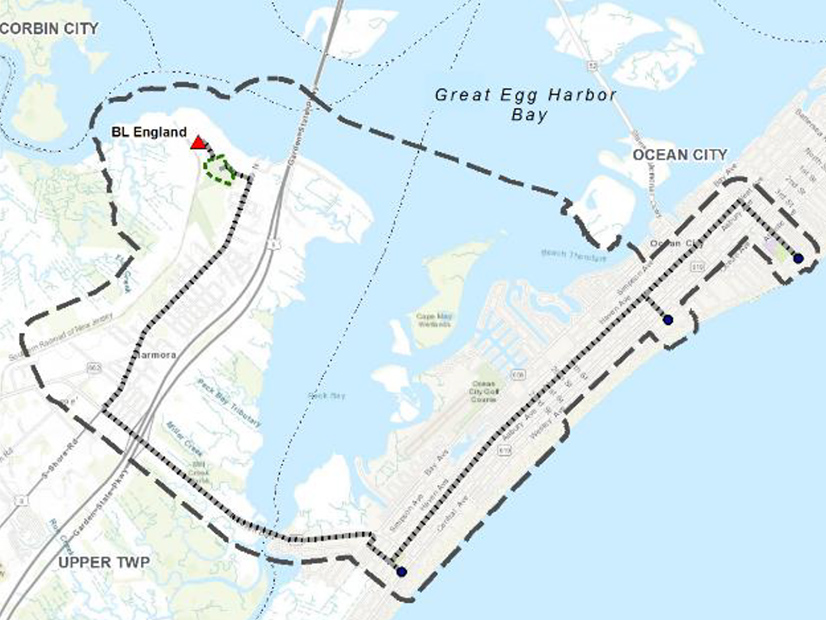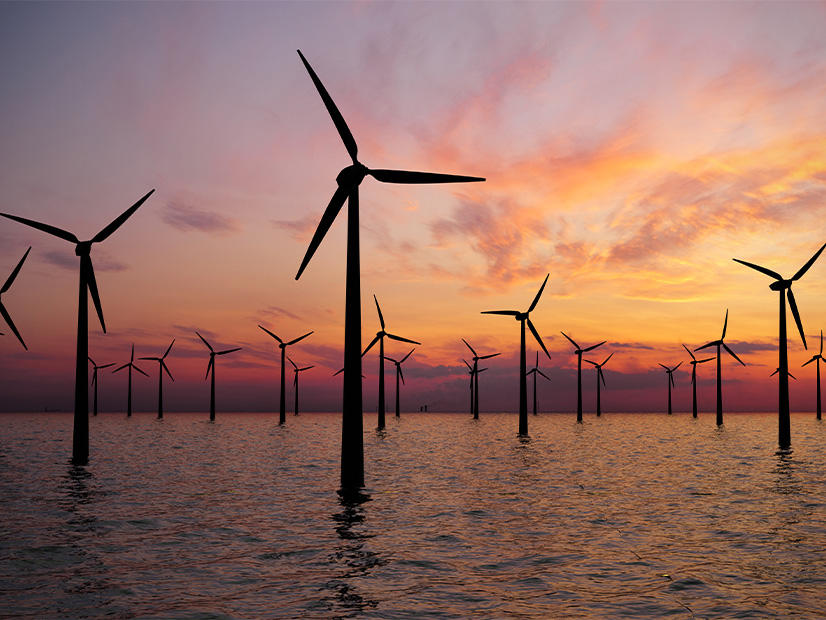New Jersey’s first offshore wind project, Ocean Wind, has encountered its most public challenge as it seeks an easement from the tourist town of Ocean City to run cables, buried three feet underground, to an inland substation. Thus far, the town appears to oppose the easement, and the project developer Ørsted has asked the New Jersey Board of Public Utilities (BPU) to step into the fray to approve the easement regardless of the town’s wishes in the matter.
The BPU recently agreed to hear the case and selected Chair Joseph L. Fiordaliso to oversee and rule on the issue.
The case is the first test of a new law, S3926, passed in July 2021, that allows for the siting, construction and operation of “wires, conduits, lines, and associated infrastructure” on public land if needed to connect an offshore wind project to the grid, despite any opposition from local authorities as long as they are consulted. The bill stipulates that the connecting infrastructure should be buried underground. (See NJ Lawmakers Back Offshore Wind Bills.)
Before the 5-0 BPU vote agreeing to hear the petition, Commissioner Upendra J. Chivukula acknowledged the potentially groundbreaking decision facing the agency as it evaluates Ørsted’s request to secure the easement rights. “This is a new precedent, and we are getting into areas where the board has not been before,” he said.
Ocean City officials did not respond to NetZero Insider emails and a phone call seeking comment.
In its petition, Ørsted asked the board to rule that Ocean Wind meets the requirements of S3926 and can therefore move ahead with siting the cables on the proposed route without the town’s approval.
The company is seeking a 30-foot-wide easement running the length of the island, which is about eight miles long, for a 275-kV cable that will connect Ocean Wind’s turbines, about 15 miles offshore, to the PJM grid at a substation at a now closed coal-fired power plant in neighboring Upper Township.
In its petition and related affidavits, Ørsted said it has held multiple public hearings to explain the project and has also had numerous meetings with Ocean City officials but has yet to secure the municipality’s agreement on the easements. The developer argues that it needs the easements to keep the project on track and meet its commitment to the BPU that the first phase of the project’s commercial operation would start May 1, 2024.
‘No Room’ for Cables
Approved in 2019, the 1,100 MW Ocean Wind project is the first of three offshore wind farms given the green light by the BPU, and as the first, its ability to overcome permitting and other obstacles may carve a path forward that will inform and shape succeeding offshore wind projects.
Aside from Ocean Wind, the BPU has awarded leases to the 1,148 MW Ocean Wind II, also an Ørsted project, with 25% held by PSEG Renewables Generation, and Atlantic Shores, a 1,510 MW joint venture between EDF Renewables North America and Shell New Energies US. The state expects to hold at least three more solicitations with a goal of deploying 7,500 MW of offshore wind capacity by 2035.

Public sentiment about the Ocean Wind easement will be aired Monday when Ørsted holds an online public hearing focused on its proposal to run the cable under land that was improved under the state’s Green Acres program, which funds the creation and preservation of parkland.
Suzanne Hornick, an Ocean City resident and environmental activist, believes local opposition is strong, not only to the easement but to anything that would move the project forward.
“We do not want these cable bundles across our island,” said Hornick, who lives a few blocks from the proposed path of the cables. She is worried about damage to the ground and potential health hazards from electromagnetic fields emanating from the cables, she said.
“There’s no room here for that,” she said of the developer’s cable plan. “They want to come across our beach and our island, and the one main street in the middle of the island that gets you on and off… The area that they’re talking about is so narrow for such a huge cable.”
Local Opposition
Just how New Jersey will connect those 7,500 MW of offshore wind to the onshore grid will become increasingly important as the projects move through permitting and start construction. The BPU announced Monday that it has pushed back the date of its next solicitation, from September of this year to January 2023. The delay is partly to accommodate a BPU solicitation underway with PJM to help find solutions on how to upgrade the grid to handle the energy coming in from offshore wind projects. (See NJ Delays Third OSW Solicitation for PJM Tx, NY Bight Winners.)
The offshore wind projects, although warmly received by some environmentalists and public officials, have faced opposition from the fishing industry, which fears that the turbines will disrupt fishing areas and will create a dangerous environment for boats pulling nets. The tourism sector also has voiced concern that the sight of scores of turbines offshore could reduce the number of visitors coming to the state’s coast.
Similarly, local residents and property owners are worried about the impact for local properties resulting from construction to install cables and other equipment. (See NJ’s Offshore Wind Project Faces Criticism, Support.)
“Ocean City is a little, teeny … barrier island,” Hornick said. “The only thing that we have that maintains our quality of life and our community is our tourism.”
Overriding Home Rule
But Ørsted says the easements are necessary to apply for environmental permits for the project, as is the permission needed for the cable to run through land developed with state Green Acres funds. So far, however, despite discussions with the township stretching back to 2019, “Ocean Wind has been unable to obtain the required easements, consents and associated actions from Ocean City,” the petition said.
The company argues that if the BPU concludes that the easements, or rights of way, are “reasonably necessary for the construction or operation” of the project, S3926 allows the BPU to override municipal and county rules and issue its own order approving the easement.
Ørsted’s petition, however, argues that “in similar contexts involving public utility projects, both the Board and the courts of this State have long held that the welfare of the public generally transcends the municipal borders and local municipal concerns.”
The BPU’s intervention is “appropriate and important because local officials cannot be expected to balance local interests against the greater good of the public,” the petition says.
But others see S3926 as overriding New Jersey’s long-held tradition of home rule, which preserves the rights of local authorities to make decisions that affect their own back yards. Sen. Bob Smith (D), one of the bill’s sponsors, acknowledged the potential conflict but said the need to move swiftly to combat climate change made the measure necessary.
Ocean City officials voiced opposition to the bill before its passage. The township council voted 7-0 in June in favor of a symbolic resolution that said the law, if enacted, would “severely affect the ability of local governments to exercise home rule pertaining to the offshore wind farm project,” according to a local press report.
Hornick agrees. “We don’t have a choice anymore,” she said. “Our voices been taken away. And to me, that is the most un-American thing anybody could do.”

